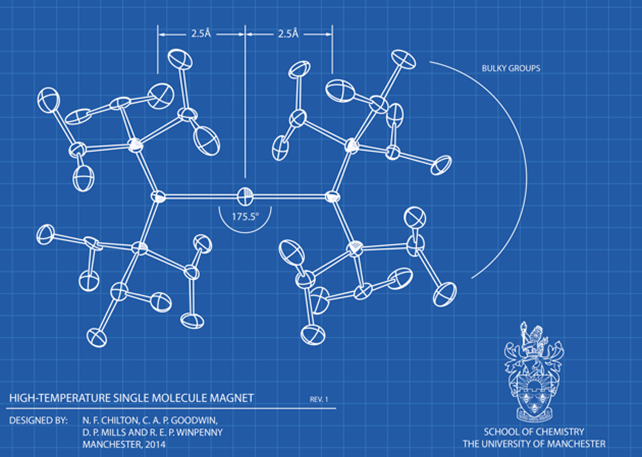Designer magnetic anisotropy: what’s the limit?
This project uses density-functional theory to design ligands for two-coordinate dysprosium(III) complexes, aiming to enhance single-molecule magnets that store data at high temperatures. It builds on a proven blueprint to push the limits of molecular magnetic information storage.
Groups
Project status
Content navigation
About
The Mills group at The University of Manchester isolated the first two-coordinate lanthanide complex and we used it to design a blueprint for single-molecule magnets that could store information at high temperatures (see Figure and Chem. Commun., 2015, 51, 101). While we were very successful building single-molecule magnets with the desired properties using similar designs (see Nature, 2017, 548, 439), it has taken a decade for us to make a molecule using that design (Nature, 2025, 643, 125). Now that we have proved the design is feasible, we are looking to see how far we can push it, and to see if we can design a molecule that can store magnetic information at even higher temperatures. A student working on this project would employ density-functional theory calculations to design ligands that would better protect the metal sites in two-coordinate dysprosium(III) complexes and enforce more linear geometries. Depending on the length/success of project, the student may perform calculations to assess how well the proposed designs will work to store magnetic information.

